Best Places to Dive: The Ghost Fleet of Truk Lagoon, Federated States of Micronesia
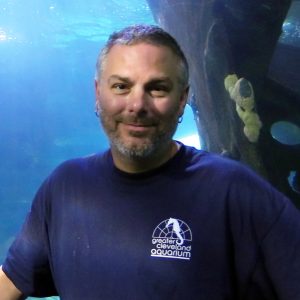 “Growing up, we learn about history through books. We even get to take trips and see battlefields, buildings, and relics. Few of us ever get to see the evidence, examine it, lay eyes on the details and the human element,” begins Mike Gorek. Mike is Senior Maintenance Engineer at Greater Cleveland Aquarium, and we like to say that he’s been here since before we had water. He’s talking about a remarkable dive trip – a liveaboard at Chuuk Lagoon in Micronesia.
“Growing up, we learn about history through books. We even get to take trips and see battlefields, buildings, and relics. Few of us ever get to see the evidence, examine it, lay eyes on the details and the human element,” begins Mike Gorek. Mike is Senior Maintenance Engineer at Greater Cleveland Aquarium, and we like to say that he’s been here since before we had water. He’s talking about a remarkable dive trip – a liveaboard at Chuuk Lagoon in Micronesia.
“It was a vacation. I got to live on a boat in the middle of nowhere in a country that few people know exists, and fewer could find on a map. Unfortunately for the people of Chuuk, the Imperial Japanese Navy were aware of their existence and went above and beyond to impose their will on the natives of these islands, all for strategic advantage for the Pacific,” says Gorek.
A little background about the island nations of the Western Pacific: Micronesia is a subregion in Oceania consisting of over 2,100 small islands and consists of four main island groups: the Mariana Islands (which includes Guam, the largest island in the region), the Marshall Islands (site of 24 nuclear tests at Bikini Atoll by the United States in the 1940s and 50s), the Gilbert Islands, and the Caroline Islands, which includes the Federated States of Micronesia (FSM). These island chains are no strangers to colonialism, and FSM was captured by Japan in World War I. During World War II, Chuuk Lagoon served as the Empire of Japan’s naval base in the South Pacific theater. It can be confusing, but Chuuk refers to the state and the land, Truk refers to the lagoon and dive sites. In February of 1944, just over two years after Pearl Harbor, the United States Navy launched Operation Hailstone to take out the Japanese fleet.
“In the wee hours of February 17th into the 18th, American forces decimated the Japanese fleet. Over 250 aircraft and north of 50 ships were destroyed and/or sent to their resting place on the bottom of the ocean,” Mike says about Hailstone. A generation later, this site of incredible carnage lures wreck divers from around the world. I’ll let Mike tell it.
“For a week some 59 years (after the attack), I stepped aboard the Odyssey to dive the wrecks of Truk Lagoon. We landed on a short runway where, from the plane, there’s no visible land and your luggage is dumped through a hole in the wall with a front-end loader. There were 25 dives over six-and-a-half days, most surpassing 30 meters, culminating with the San Francisco Maru. (Its deck is 165 feet and, while passing through the cargo hold at 186 feet, we still hadn’t reached bottom.) Most of the ships we encountered were merchant ships converted to military use for the Imperial Japanese Navy.
The thing about war you never see is the human element, in this case, sake bottle after sake bottle, medical tools, gas masks, rubber boots, tile latrines and the head on the boats, tools, air compressors, and gauges stuck in their resting places. But beyond any of these relics were human remains themselves—femur bones on an operating table or even a human skull. All these things littered these wrecks through the mid-1980s, though less these days. Ships that stood proud and tall, are now reduced to fields of soft coral playing home to fish, crab, octopus and everything else you can possibly think of.
There were cargo holds filled with trucks, motorcycles, Japanese Zeros and an abundance of surplus parts . . . all just frozen in time. Periscopes on a submarine tender, bulldozers encrusted to steel, waiting for their opportunity. What was really astounding, the biggest take away, was the raw power of black powder. We crawled through two-inch think plated steel mangled from a torpedo blast.”
Initially explored in 1969 by legendary oceanographer Jacques Cousteau and often referred to as the “Ghost Fleet of Truk Lagoon”, Chuuk Lagoon is now known as the world’s greatest collection of diveable World War II Japanese shipwrecks.
The Ghost Fleet of Truk Lagoon is the tenth and final in our series of the Aquarium dive team’s favorite dive locations. Thank you for all the readers who’ve kept up and those who come back to the series. If your destination wasn’t on our list, suggest somewhere new we might want to explore.
- Ray D.

 Nicknamed the “Soft Coral Capital of the World” by none other than famous oceanographic explorer Jean-Michel Cousteau (son of Jacques), the islands of Fiji are a year-round diving destination filled to the brim with assorted sea life.
Nicknamed the “Soft Coral Capital of the World” by none other than famous oceanographic explorer Jean-Michel Cousteau (son of Jacques), the islands of Fiji are a year-round diving destination filled to the brim with assorted sea life.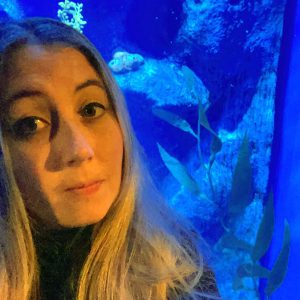 Kona, Hawaii is world-renowned for two things: Kona coffee and swimming with manta rays at night.
Kona, Hawaii is world-renowned for two things: Kona coffee and swimming with manta rays at night.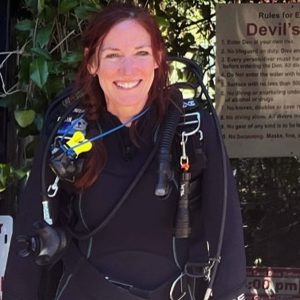 Not every diver seeks tropical water and colorful fish. For some, the lure of historic shipwrecks or the challenge of cold-water diving draw them further north and inland to freshwater lakes. The Great Lakes is a wonderful location to find thousands of wrecks that, due to the lack of corrosive saltwater and stronger ocean currents, tend to be better preserved.
Not every diver seeks tropical water and colorful fish. For some, the lure of historic shipwrecks or the challenge of cold-water diving draw them further north and inland to freshwater lakes. The Great Lakes is a wonderful location to find thousands of wrecks that, due to the lack of corrosive saltwater and stronger ocean currents, tend to be better preserved. In 1999, a daring spearfisherman in Greece named Manolis Efthymakis made a stunning discovery. While free-diving 30 feet down, he saw an opening in the cliff wall and did what most of us would not: he swam into it. What he found drew the interest of both the diving and the archaeological community.
In 1999, a daring spearfisherman in Greece named Manolis Efthymakis made a stunning discovery. While free-diving 30 feet down, he saw an opening in the cliff wall and did what most of us would not: he swam into it. What he found drew the interest of both the diving and the archaeological community.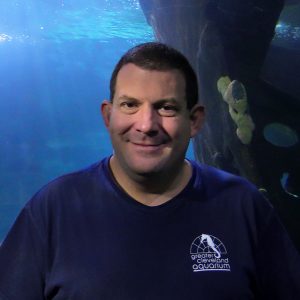 A shade over 66 million years ago, a six-mile-wide meteor came screaming out of the heavens at 12 miles per second and a 60-degree angle to the surface of the Earth, which is kind of a worst-case scenario angle in terms of plunging chunks of space rock. It absolutely pulverized the impact zone with the force of a 100 million megaton bomb, creating tsunamis hundreds of feet high and flinging rocks half a continent away. For non-avian dinosaurs, the impact marked the end of an era. Literally. This is where the Mesozoic Era ended, and the Cenozoic began—the infamous K-T Extinction that eliminated roughly 80 percent of all species on the planet.
A shade over 66 million years ago, a six-mile-wide meteor came screaming out of the heavens at 12 miles per second and a 60-degree angle to the surface of the Earth, which is kind of a worst-case scenario angle in terms of plunging chunks of space rock. It absolutely pulverized the impact zone with the force of a 100 million megaton bomb, creating tsunamis hundreds of feet high and flinging rocks half a continent away. For non-avian dinosaurs, the impact marked the end of an era. Literally. This is where the Mesozoic Era ended, and the Cenozoic began—the infamous K-T Extinction that eliminated roughly 80 percent of all species on the planet. When
When 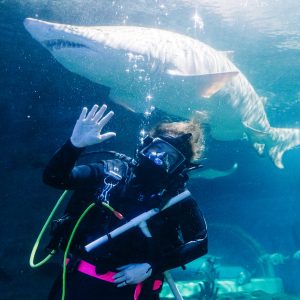 We dive for a variety of reasons. To commune with nature, to unwind, to explore. Our “pale blue dot,” as astrophysicist and author Carl Sagan pointed out, is just a “very small stage in a vast cosmic arena,” but perhaps by diving in we can learn to better appreciate that fragile ecosystem largely invisible to us as we commute between school, work and the grocery store in our busy daily lives.
We dive for a variety of reasons. To commune with nature, to unwind, to explore. Our “pale blue dot,” as astrophysicist and author Carl Sagan pointed out, is just a “very small stage in a vast cosmic arena,” but perhaps by diving in we can learn to better appreciate that fragile ecosystem largely invisible to us as we commute between school, work and the grocery store in our busy daily lives.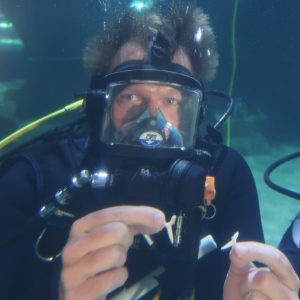 Scuba diving and Cleveland, Ohio . . . sort of go together like peanut butter and monkey wrenches, right? I challenge you to find one of those “101 Places to Dive Before You Die” books with a cover that isn’t turquoise, tropical and filled with colorful reef fish. And yet Cleveland has its own extensive dive community. Lake Erie, the shallowest of the Great Lakes, has hundreds of shipwrecks to explore and is serviced by several dive shops that teach classes, sell gear, and organize trips all over the world. Northeast Ohio is home to around 4.5 million people and an untold amount of scuba divers who love to explore the waters in their own backyard as well as adventure to distant places to see what there is to see in the 70% of our planet that is underwater.
Scuba diving and Cleveland, Ohio . . . sort of go together like peanut butter and monkey wrenches, right? I challenge you to find one of those “101 Places to Dive Before You Die” books with a cover that isn’t turquoise, tropical and filled with colorful reef fish. And yet Cleveland has its own extensive dive community. Lake Erie, the shallowest of the Great Lakes, has hundreds of shipwrecks to explore and is serviced by several dive shops that teach classes, sell gear, and organize trips all over the world. Northeast Ohio is home to around 4.5 million people and an untold amount of scuba divers who love to explore the waters in their own backyard as well as adventure to distant places to see what there is to see in the 70% of our planet that is underwater.